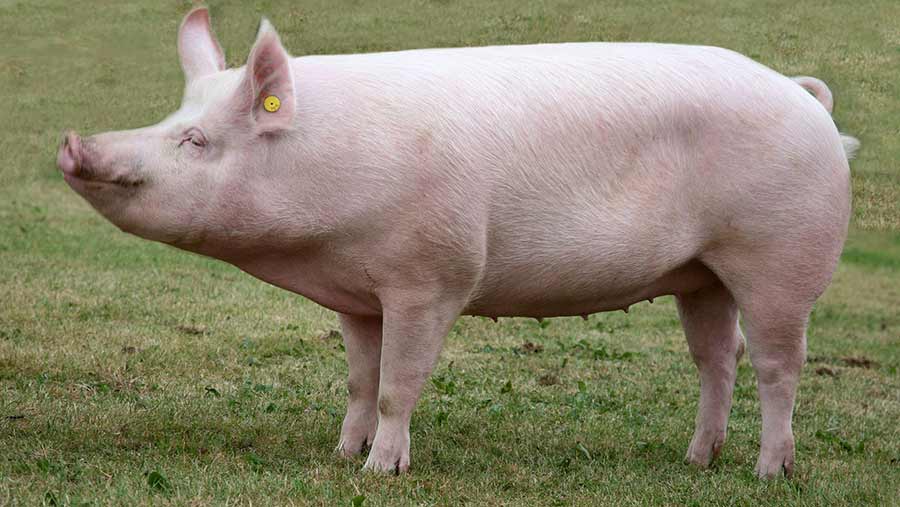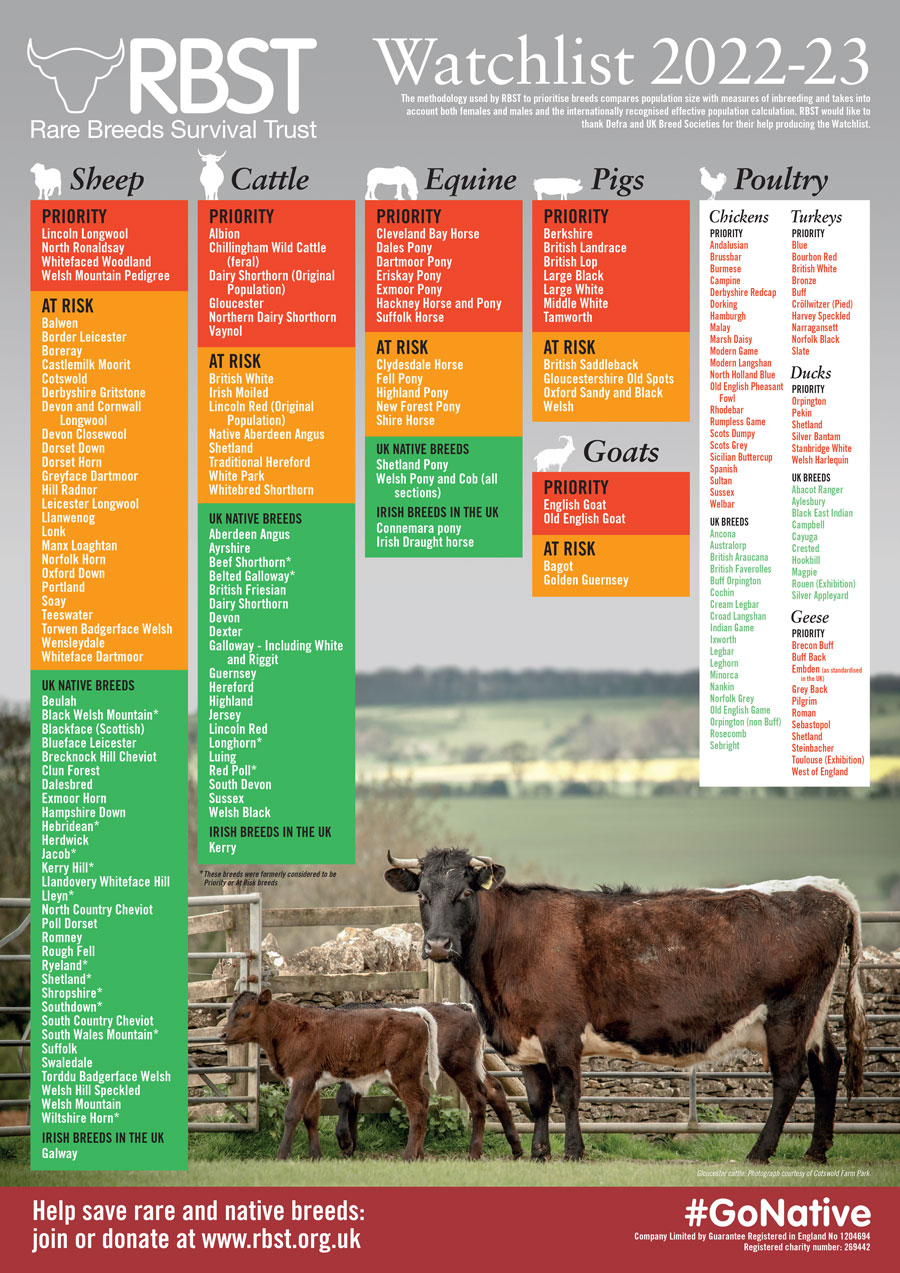Large White pig among breeds in ‘dire straits’, charity warns
 © British Pig Association
© British Pig Association Large White pigs face extinction if their dramatic decline in numbers is not halted, the Rare Breeds Survival Trust (RBST) has warned.
The livestock conservation charity said some of Britain’s native breeds are in “dire straits”, as it published its annual watchlist this week.
See also: Native and rare breeds offer healthy margins, survey shows
Large Whites are now among the seven native pig breeds of most concern, which are both rare and have increased inbreeding.
In 1954, the number of licensed Large White boars recorded was 16,751, which represented 76% of the total male pig population.
Data from the British Pig Association shows just 66 boars were recorded in 2021.
The RBST said the breed’s effective population size has fallen from more than 900 in 2000, to just 125 today.
Effective population size indicates the genetic diversity within the breed, by accounting for the total number of animals in a population and the relative numbers of sires and dams.
‘Very concerning’
Christopher Price, RBST chief executive, said: “The pig industry has had an awful year and the situation for native pigs is very concerning.
“If we lose these breeds, we lose not only an irreplaceable piece of our heritage, but also their unique genetic value and their crucial contributions to a future for farming where food production and the environment go hand in hand.”
Bedfordshire pig farmer Mike Duxbury gave a stark warning about the under-threat Large White.
“If we lose the Large White we will lose the foundation of the British pig industry, it is that vital. It has been the boar of choice,” he told Farmers Weekly.
The farmer finishes Large White pigs at Inclusive farm, near Flitwick, and sells direct to local people, restaurants and pubs.
“Farming needs to remember how we built our heritage and we built it on good progeny. It is a bit like the Hereford and Devon cattle, they were the backbone of Britain in the beef industry and then we flooded the market with a lot of continental breeds.”
Sheep and cattle
The RBST said there had been a significant decline this year in the numbers of Norfolk Horn breeding dams, which was “very worrying” for one of the UK’s oldest sheep breeds.
Gloucester cattle also remain a major concern, with a decline in the number of dams adding to concerns about a lack of genetic diversity and distribution around the country, he charity added.
However, there was positive news for some breeds, despite none improving enough to move off the RBST watchlist.
Mr Price said: “Breeds enjoying an improving situation include the English Goat, Lincoln Longwool sheep, Middle White pigs and Vaynol cattle. We now have the chance to harness these welcome improvements into further success for these breeds.”
Download the PDF of the RBST Watchlist.

